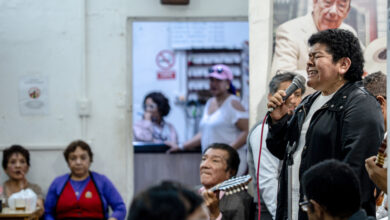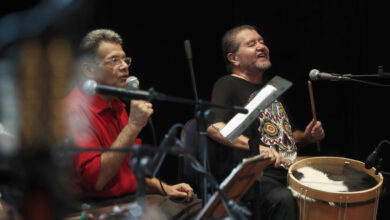Among Whom Is the Money You Pay for a Concert Ticket Divided?
Many people pay a ticket to see their favorite artist, but in it, they pay for a complete production chain. We tell you what you pay when you buy the ticket for a concert .

Photo: Pexels
LatinAmerican Post | Julián Gómez
Listen to this article
Leer en español: ¿Entre quiénes se reparten el dinero que pagas por una boleta para un concierto?
The business of concerts and festivals is above all risk. To give an example, the recently completed Festival Estéreo Picnic only generated profits in its fourth edition thanks to The Killers and New Order. From then on, two to three days passed and the "believers" (the name given to those who are fans to this spectacle) from 1,000 to 4,000.
Since then, all the event has done is try to compete with the Lollapalooza franchise in Brazil, Argentina, and Chile. It still does not match them in attendance, but it does in curatorship; sometimes it can get beyond it, as many considered in the last edition.
There are a series of items to take into account for the moment in which each person accesses a ticket. Contrary to what is commonly thought that the total goes to the artist, there are some variables that make him only take part of the total. Also, each event has different percentage clauses in profits, and it is difficult to clearly establish a single formula, considering that artists and promoters are leery of revealing these details.
How Is the Payment of a Ticket to a Concert Distributed?
The first thing to consider is the tax rate that falls on an entry. This may vary by country. The minimum range is 5%. To this must be added what the ticket office charges for the distribution and sale service, which would be 10%. In many cases, such as Live Nation and Ticketmaster, the ticket holder and the promoter have the same owner or are partners. Finally, there is a 1% that generally goes to composers for copyright issues.
The remaining percentage of the total value of the ticket, which would be a maximum of 84%, is mainly distributed between the act and the promoter. The balance ratio is usually 85% – 15% of what remains net of the value of the ticket, being the majority for the act. From there, the artist must distribute percentages for production, his team (whether musicians, dancers, or staff) and the manager, who often keeps between 10 or 15% of what is left for the show. After the deal, the artist could see his net profit.
On the other hand, of that 15% that mostly remains for the promoter, the venue, publicity, and logistics for the event must be provided. After debugging the previous obligations, the promoter will be able to see profits from a concert or festival. Sometimes the promoter takes the liberty of raising the price of the tickets to make more profit.
Also read: April 2023: The 7 most Anticipated Premieres on Streaming Platforms
Diversity of Agreements
Although the conventional way to distribute profits is as explained in the previous section, there are many other ways to do it. Another way is for the artist to propose a basic sum to be presented and in the event that a profit cap is exceeded, they could receive a percentage more depending on success. However, in the event that the concert is not successful, the artist only charges for what was agreed, even if the promoter suffers losses.
On other occasions, the artist and the promoter jointly assume the profits and losses equally, but everything will depend on the type of agreement they reach. In general terms, the risk falls mainly on the promoters.
Sometimes among them, they auction to bring an artist, as was the case of Paul McCartney to Medellín. At that time, the businessmen raised the base price that the artist asked as a condition, until one of them won the show. However, because the cost of bringing it was higher than usual, the promoter was forced to inflate the ticket price and people did not respond as expected. The imbalance was such that neither the artist nor the promoter could make a profit and the show fell apart.
Not everything is always satisfactory for promoters who strive to have quality acts in Latin America. One of the variables that is affecting the industry right now is the escalation of the dollar, since the increase in the ticket office has been noticed in this 2023 with European and North American artists especially.




